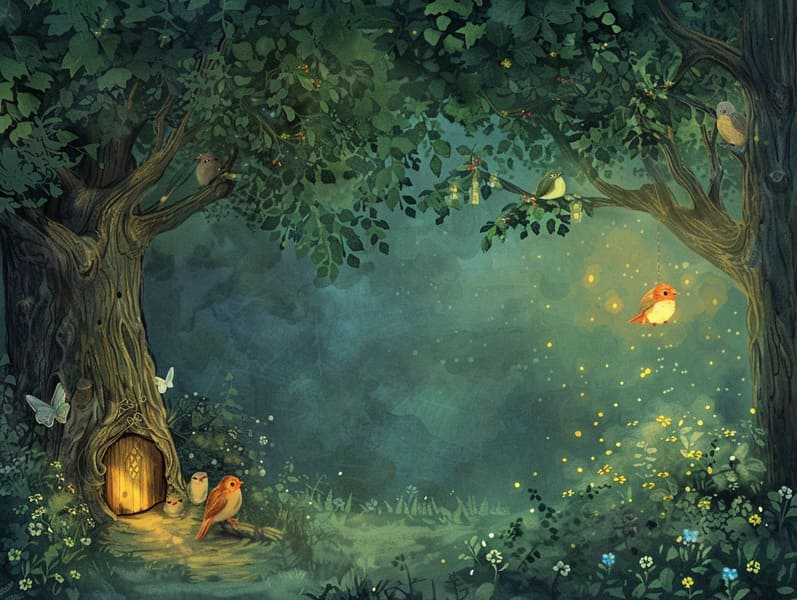Understanding the Legacy of Fairy Tales with Its Unwavering Spell.
Understanding the Legacy of Fairy Tales with Its Unwavering Spell.
Blog Article

Best fairy tales have long histories. These narratives have been whispered from one generation to the next far before they were ever put on paper. They came from a variety of cultures, including African traditions. They were initially conveyed among older generations, often carrying themes and messages concerning the societal norms and beliefs of the time.
Jacob and Wilhelm Grimm, the two Grimm brothers, were among the first to gather and publish many of these beloved tales. Their compilation, "Grimm's Folk Tales," included classics like "Ashenputtel," "Little Brother and Little Sister," and "Schneewittchen," which have since become cornerstones in the world of famous fairy tales. Similarly, H. C. Andersen's fantastical fairy tales, such as "The Mermaid's Tale," and "The Ugly Duckling," have captured hearts worldwide, securing their place in the pantheon of beloved fairy tales.
Despite being ancient, these tales remain as relevant as ever, especially as children's night stories. These enchanting tales are now available in multiple formats, including beautifully illustrated books, magical animations, and internet fairy tales.
Their unwavering allure can be traced to several magical reasons:
Vital Lessons: Old fairy tales often convey important moral lessons. Stories like "The Tale of the Boy Who Cried Wolf" teach the importance of sincerity, while "The Race of the Tortoise and the Hare" illustrate the virtues of perseverance and unpretentiousness. These narratives offer the young clear distinctions between good and bad, building their moral compass in a kind yet profound way.
Empathy and Understanding: Timeless fairy tales frequently include heroines facing tests and troubles, prompting kids to feel with their struggles and cheer for their triumphs. For instance, "The Tale of Beauty and the Beast" shows us the benefit of seeing inner beauty to acknowledge the true being of a character, cultivating kindness and perception.
Cultural Knowledge: Many old fairy tales are interwoven with the cultural contexts from which they arose. Exploring these narratives can provide intriguing perspectives into different customs, advancing a sense of world insight and recognition.
Creativity and Imagination: The supernatural elements in traditional fairy tales—magic wands—foster children’s fantasy worlds. These tales guide readers to fantasy realms, motivating fantasy-filled thoughts and a sense of marvel that lasts a lifetime.
Old fairy tales are not only charming but also educational. They work as alluring tools in advancing various mind and heart abilities in young readers. When traditional fairy tales are spoken, they develop verbal skills by bringing new words and elaborate sentence structures. This practice also strengthens listening abilities and mental focus, as little ones track the narrative, excited to see what happens next.
Furthermore, analyzing the themes and characters of classic fairy tales can enhance thinking skills and evaluative skills. Little ones are led to notice patterns, forecast, and know cause and effect. These conversations also aid the young reveal their thoughts and feelings, nurturing their emotional intelligence.
In today’s high-tech era, the prevalence of web-based fairy tales has made these stories more reachable than ever. Internet resources and mobile apps offer vast collections of traditional fairy tales that can be perused or listened on anytime, anywhere. Fairy tales told out loud are particularly in demand, making available an fascinating method for young readers to engage with these spellbinding stories. Narrated books and voiced videos move characters and settings to life, often supplemented by whimsical background sounds and musical scores that amplify the tale-telling adventure.
The lasting appeal of classic fairy tales lies in their ability to shift to present eras while maintaining their key morals. Contemporary renditions of these narratives often feature more diverse figures and modern settings, making them relevant to today’s audience. However, the core values of braveness, compassion, and truth remain unchanged, continuing to influence children of all ages.
Timeless fairy tales also offer a sense of familiarity and knowability. They yield a organized narrative with a plain beginning, middle, and end, often ending with the termination of conflicts and the triumph of right over wrong. This foreseeability can be encouraging for children, bringing a sense of constancy in an fluctuating world.
Old fairy tales continue to captivate and inform new generations, maintaining their allure and applicability in modern society. As children's bedtime stories, they provide a perfect blend of charm and understanding, facilitating moral values, empathy, and creativity. The abundance of online fairy tales and the commonness of fairy tales read out loud make sure that these traditional narratives remain available to new generations.
By upholding and telling these narratives, we continue to acknowledge the rich tapestry of creativity and cultural heritage. Whether you are browsing a vividly illustrated book, enjoying a internet library, or listening on an read-aloud story, the appeal of famous fairy tales is always within reach. These fairy tales highlight of the persistent nature of tales and its ability to join us across epochs and places.
Whether you are perusing a colorful picture book, exploring a online collection, or listening on an sound book, the delight of ancient fairy tales is always within reach.
These narratives emphasize of the immortal nature of storytelling and its ability to gather us across centuries and lands, forming a connection that enchants and check it out educates alike.